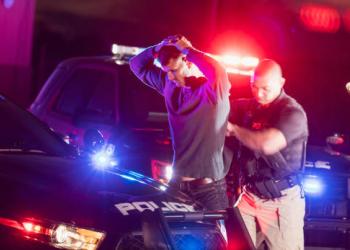
Pat Down for Weapons
A patdown for weapons is illegal absent sufficient reasonable suspicion to believe the subject may be armed. An officer’s knowledge that a detained individual has a prior weapons offense on his record, but with no indication that violence might have been involved, is legally insufficient to justify a patdown for weapons.
Vacaville Police Officer Chris Hill was on patrol at around 1:30 a.m. on January 3, 2020, when he observed defendant Juan Pantoja driving “rather quickly” (although within the 25 mph speed limit) while making a right turn onto Brown Street, in an area referred to as a “high-crime area.” Officer Hill decided to follow defendant. Noticing that his license plate light and his third brake light located in the rear window were not working, he decided to make a traffic stop. As defendant pulled into an apartment complex parking lot, Officer Hill turned on his overhead lights and initiated the traffic stop. Contacting defendant (the vehicle’s sole occupant), Officer Hill vaguely recognized him, noting that defendant was wearing a “baggy,” hooded sweatshirt. When defendant identified himself by providing his driver’s license, Officer Hill remembered him—as he wrote in his police report—as having “a history of violence and firearm possession, and (that) he was at the time an investigative lead in a homicide.” However, in later testimony, Officer Hill was unable to recall any specific crimes of violence in which defendant might have been involved. And the homicide case referred to above apparently was something in which he was no more than a witness. Officer Hill did testify to having had prior contacts with defendant a handful of times, and that he “also (had) seen his name in briefing logs.” Additionally, Officer Hill “thought” he’d transported defendant once when defendant was arrested for possession of firearms. However, the officer acknowledged in testimony that he was unable to recall having any personal contacts with him when a crime of violence was involved. Back to the circumstances of the traffic stop, Officer Hill testified that he did not notice anything that might have been considered unusual (e.g., no smell of marijuana, no contraband in plain sight, and no indication defendant might have been drinking.) A records check showed that defendant’s license was valid and that he was not on probation or parole, defendant telling the officer he’d completed probation two years earlier (i.e., 2018). In response to Officer Hill’s questioning, defendant gave a logical explanation as to why he was out so late (buying a burrito). Asked if he had any marijuana in the car, defendant claimed he never touched the stuff. Even though Officer Hill did not have any reason to search defendant’s car, he asked for permission to do so anyway. Defendant declined. Despite all of the above indications that there was nothing unusual occurring during this contact (aside from his refusal to let Officer Hill search his car), the officer asked defendant to get out of the car and put his hands behind his head because he was going to issue him a citation for the vehicle’s lighting infractions. In later testimony, Officer Hill stated that he “elected to remove him from the vehicle and pat him down so that (he) could compete the citation,” inferring, apparently, that this was necessary in order to write the ticket safely. Asked by the prosecutor whether he believed “defendant was armed or dangerous at that moment,” Officer Hill responded: “He was wearing baggy clothing. He had [a] hoodie on and jeans. The hoodie naturally has bulges in it, so based upon defendant’s history of weapons, I elected to remove him from the vehicle and pat him down so I can complete the citation.” Officer Hill, however, failed to mention in his police report any bulges in defendant’s clothing. And he acknowledged in testimony that it was cold outside at the time of the traffic stop. Asked a second time by the prosecutor if he believed defendant was presently armed and dangerous, Officer Hill testified: “There's a good possibility or chance, yes.” It was also noted, however, that although defendant did not make any furtive gestures or other sudden movements, he did appear “to get nervous” when he was told that the officer was about to pat him down. The patdown resulted in the recovery of a loaded pistol in his waistband area, underneath his sweatshirt hoodie. Being charged in state court with being a felon in possession of a firearm (Pen. Code § 29800(a)(1)), defendant filed a motion to suppress. After hearing the above evidence, the trial court granted defendant’s motion, finding the patdown to be illegal. With the case against defendant being dismissed, the People appealed.





